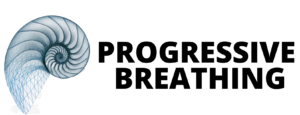The Positive Effects of Slow, Deep Rhythmic Nasal Breathing on Blood Pressure and Heart Rate Variability
In today’s fast-paced world, stress and lifestyle factors can lead to elevated blood pressure and diminished heart health. Fortunately, one of the most powerful tools for promoting cardiovascular well-being is available to everyone: slow, deep rhythmic nasal breathing. This simple yet effective technique can positively impact blood pressure and heart rate variability (HRV), contributing to better overall health.
Understanding Blood Pressure and Heart Rate Variability
Blood pressure is the force of blood pushing against the walls of your arteries. When this pressure is consistently high, it strains the heart and blood vessels, increasing the risk of heart disease, stroke, and other health issues. Heart rate variability (HRV) refers to the variation in time intervals between heartbeats. A higher HRV is typically an indicator of a healthy heart, reflecting the body’s ability to adapt to stress and maintain balance between the sympathetic (“fight or flight”) and parasympathetic (“rest and digest”) nervous systems.
When blood pressure remains high or HRV is consistently low, the body can enter a state of chronic stress, negatively impacting cardiovascular health. However, slow nasal breathing techniques can help regulate both metrics, providing immediate and long-term benefits.
The Power of Nasal Breathing
Breathing through the nose offers several advantages over mouth breathing, particularly when done in a slow and rhythmic manner. Nasal breathing filters and warms the air, allowing the body to receive clean, properly conditioned air. It also increases the production of nitric oxide (NO), a molecule that plays a key role in vasodilation, or the widening of blood vessels. This helps regulate blood flow, improves oxygen uptake, and ultimately promotes healthier cardiovascular function.
How Nasal Breathing Lowers Blood Pressure
One of the most significant effects of slow, deep nasal breathing is its ability to reduce blood pressure. When you breathe deeply and rhythmically through your nose, you activate the parasympathetic nervous system, which promotes relaxation and reduces stress. This counters the effects of the sympathetic nervous system, which raises blood pressure during stressful situations. Over time, consistent nasal breathing can lower baseline blood pressure by:
- Promoting Vasodilation: The increased production of nitric oxide helps widen blood vessels, reducing the resistance against which the heart must pump blood. This eases the strain on the cardiovascular system and contributes to lower blood pressure.
- Regulating Oxygen and Carbon Dioxide Levels: Slow nasal breathing ensures a proper balance of oxygen and carbon dioxide in the blood. This balance is crucial for maintaining healthy blood pressure, as high levels of carbon dioxide can cause blood vessels to constrict, while low levels can lead to over-breathing and hyperventilation, which can elevate blood pressure.
- Reducing Cortisol Levels: Chronic stress elevates cortisol, a hormone that raises blood pressure. Nasal breathing reduces stress by calming the nervous system, which, in turn, lowers cortisol production and helps normalize blood pressure.
Enhancing Heart Rate Variability with Rhythmic Breathing
Slow, deep nasal breathing also has a profound effect on heart rate variability (HRV), which is a marker of cardiovascular fitness and resilience to stress. A higher HRV indicates that your heart can effectively respond to environmental changes and physiological demands. Here’s how nasal breathing improves HRV:
- Parasympathetic Activation: Slow nasal breathing engages the vagus nerve, a key component of the parasympathetic nervous system. This increases HRV by promoting relaxation and enabling the heart to recover quickly after stress. The more frequently the vagus nerve is stimulated, the more adaptable the heart becomes to changes in stress levels.
- Reducing Sympathetic Overactivity: In our modern world, many people experience sympathetic nervous system dominance, where the body remains in a heightened state of alertness. This suppresses HRV and can lead to long-term cardiovascular strain. Nasal breathing helps restore balance by reducing sympathetic activity and allowing the heart to function more flexibly.
- Enhancing Mind-Body Connection: Slow nasal breathing fosters a mindful, meditative state, which has been shown to improve HRV. This practice encourages deeper awareness of the body’s internal rhythms, enabling better control over breathing patterns and heart function.
Summary
Slow, deep rhythmic nasal breathing is a natural, effective way to improve both blood pressure and heart rate variability, key indicators of heart health. By promoting nitric oxide production, activating the parasympathetic nervous system, and reducing stress, this practice offers powerful cardiovascular benefits. Whether you’re looking to lower your blood pressure or enhance your body’s resilience to stress, incorporating nasal breathing into your daily routine can be a simple yet transformative step toward better heart health.
Browse more benefits of Nasal Breathing on our blogs page.



